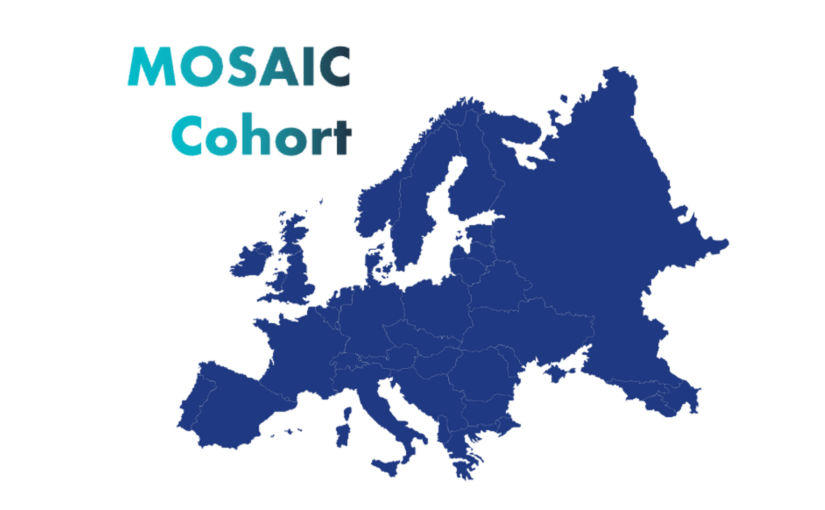Lessons learned from MOSAIC, the European cohort of human mpox

What are the specificities of the human clade IIb mpox virus (MPXV)? This clade emerged for the first time during the global mpox outbreak in May 2022. As part of the MPX-RESPONSE project, MOSAIC, a European observational study, was launched to answer this crucial question in a large scale. The results have been recently published in January in Clinical Infectious Diseases, with new insights into MPXV clinical outcomes and transmission1.
Deciphering of some key lessons learned with Xavier Lescure, the coordinator of MOSAIC.
The genesis of MOSAIC: the challenge of setting up a large observational cohort in a hurry
“After the 2022 global outbreak, knowledge about the clinical profile of the new variant of the mpox virus has been progressively developed through cas-series. MOSAIC was designed to go further, with -for the first time- a large, protocolized, multi-country evaluation in Europe with 575 participants from six different countries.
Let’s not forget that the study was carried out in a context of urgency. The global outbreak in 2022 sparked renewed concern after the COVID-19 (coronavirus disease 2019) pandemic. None of the experts saw this global outbreak coming with mpox. We were all taken by surprise. But we weren’t starting from scratch. We were able to benefit from case record forms already in place for mpox in Africa (Institut Pasteur of Bangui), as well as the knowledge we had developed with the COVID-19 pandemic (French Covid cohort).”

“MOSAIC was designed to go further, with -for the first time- a large, protocolized, multi-country evaluation in Europe with 575 participants from six different countries.”
Professor Xavier Lescure (AP-HP Nord, Hôpital Bichat, Department of Infectious and Tropical Diseases, Paris and INSERM-ANRS) coordinated the cohort MOSAIC for the EU community with Professor Piero Olliaro, chief Investigator of the study (University of Oxford).
European scale to finely define clade IIb mpox
“Several findings have emerged or have been confirmed.
Firstly, the study confirmed the uniform clinical presentation of MPXV in the different countries. In epidemiological terms, even if the participant were mainly men and adults, the youngest patient was only a few weeks old. So, we need to stay vigilant beyond the high-risk population and outside the primary route of infection. Other data: HIV status or other concomitant active sexually transmitted infection did not appear to affect disease characteristics. The participants living with HIV/AIDS were all well controlled. This confirms that care management can influence the disease expression.
Importantly, it is a long-lasting disease.
1 in 3 patients had not resolved their mucocutaneous lesions within 1 month. Our team’s study of viral kinetics revealed long excretion, with the potential for the virus to infect even though there were no longer any visible symptoms. 5% of participants still had viable virus in skin lesions 7-8 weeks after testing positive. The virus can therefore circulate quietly for a long time.
Finaly, another main finding was that 90% of patients were followed up on an outpatient basis. With MOSAIC, we were able to demonstrate our ability to include and monitor outpatients.”
A strong collaborative network with methodological and strategic lessons learned
“In addition to the scientific results, we can only emphasise the enormous amount of coordination work carried out by ANRS MIE at national and European level to bring this study to fruition. We have learnt the lessons from COVID of working together and conducting a single study to be more effective. This study enabled us to further strengthen European collaboration. Creating links for the future, with methodological and strategic lessons learned.
This work also highlights the highly importance to consolidate real-life data, in addition to clinical trials. National cohorts provide a true epidemiological snapshot for each country. But we also need international studies to improve comparisons between clades, due to complexity of mpox spread.
Having in place harmonized, always-on clinical characterization protocols is essential.”
→ To read the full paper, just click here.
MOSAIC was designed as a European multi-country observational cohort study to describe clinical and virologic characteristics and outcomes of participants with laboratory confirmed clade IIb mpox infection.
Outcomes included time-to-lesion resolution, clinical status, and virus clearance with a monitoring for up to 6 months. The cohort was established with :
- 575 participants, mostly men aged 30-45 years, mostly without any specific treatment and cared for at home (about 10% of participants were treated with a systemic antiviral – tecovirimat and/or cidofovir),
- From 6 European countries: Belgium, France, Italy, Spain, Switzerland and the UK,
- With 51 outpatient and inpatient facilities.
The study was coordinated and sponsored by the University of Oxford, with ANRS MIE (Emerging Infectious Diseases) as sponsor representative in Europe. Other MPX-RESPONSE partners involved in this study are:
- APHP, University of Basel, IdiPaz, University of Verona, University of Geneva.
- Personel E. et al. Clinical characterisation and outcomes of human clade IIb mpox virus disease – a European multicentre observational cohort study (MOSAIC). Clinical Infectious Diseases, ciae657, https://doi.org/10.1093/cid/ciae65
